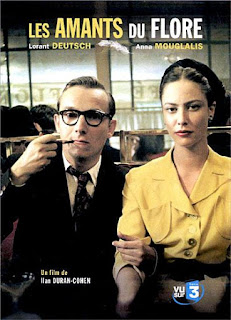Rainbow Palace (2022) by Maike Statz
As usual, I do not have the pretension of saying what this text is. Instead, I share how it resonated with me, what woke up or shook in me, which traces it left in my body, and what made me remember.
For me, one of the recurrent images in Rainbow Palace is “in-between”. Maike, when she first addresses us, is in-between. In between a past home, her first home perhaps, and a home for coming. A place to which she is moving, to be with her lover, who is already there. In-between, in an airplane, she reflects on her desire to be in two places at the same time.
“My current suspension, being in the air and in-between-places, is marked by my desire to be in two places at once, with lover and loved ones. This feeling is a missing that sits with me”.
Maike’s beautiful sentence carried me back to something Maria Zambrano once wrote that also stayed with me. As far as I remember, and I might be inventing my memories, as so often is the case with memory, Zambrano once wrote that those in exile always have to exist carrying two presents with them. The actual present of the place where they are, and the present they brought in their luggage when they left their homes. That frozen present that they can not let go of.
For a long while, I felt suffocated between two presents. Without enough air, it was hard to be able to press my body anywhere in this world.
In Maike’s text, in-between reappears when she returns to the past, to remind us that home was not always this private, domestic space for the nuclear family. This is an invention of the XIX century. Homes used to be spaces in-between, where the line between the domestic and the public was blurred. My home is at the same time a construction site and my studio. It is in the house, surrounded by my kids and their toys, that I write, rehearse and even dare to receive some collaborators (even though our bathrooms do not have doors yet, only curtains).
Maike returns to the past to invite us to imagine again what our homes could be. She is thinking during a pandemic that forced us to exist in between again. Suddenly we were forced to work, study, relax, love, imagine, be, become, grieve, grow, and die in our homes. Always in our homes. Maike is attentive to the fact that the in-between that our homes became was not the same for everyone. Some found themselves in homes with plenty of space, while many others not only did not have enough space, nor they were in spaces made for their bodies. Maike reminds us that “space has the capacity to accommodate but also to alienate”.
She brings queer science fiction to her thinking process. Following Calvin (2016), she claims that science fiction “is characterized by the ‘cognitive estrangement produced by new or novel elements of the text. As the reader compares the fictive world against their familiar lived reality a gap opens that produces a sense of alienation”.
Do we need to be able to distance ourselves from what is familiar, what is here, now, to be able to imagine something else? Reading about this gap created by science fiction I was carried back to Arendt’s incomplete account of imagination. Incomplete because she died before having the time to finish the book which she was writing about it. She had time to say that political imagination is a type of imagination that is able to access the common sense that we need to do politics and to share the world together. Arendt insists that political imagination can only be exercised when we interact with others, and never in solitude.
Maike too seems to value the exercise of imagining together. She invites us to reimagine architecture as art to build with and not for, she dares architects to embrace “a queering of spaces” and “to design for the unknowns”. She also reminds us that “it is not just the act of building that can create new realities, but also the act of dwelling”.
Although I know absolutely nothing about architecture, and very little about queerness and science fiction_ the three main pillars of Rainbow Palace_ I found myself hosted by it. Perhaps because its ground is the concept of queer in a broad sense, which includes all that is odd, strange. I am definitely odd. Perhaps, Rainbow Palace spoke with me because of the route that Maike chose to create it. Its rawness, honesty, and openness resonate with my current obsessions. I like to read texts where I can see the thinking process mixed up with the traces left by the body. Maike is very generous in sharing how and from where she sees, thinks, feels, and dreams. And she does not pretend to have all the answers. She invites us to imagine other routes together.
You can find Maike’s beautiful, political and honest text here. I strongly recommend it.




Comments
Post a Comment